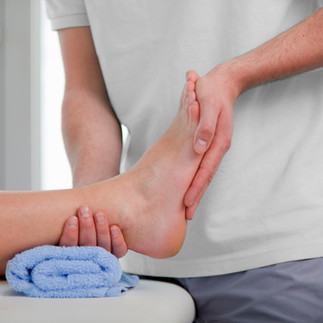Does RICE Work for Injuries? Here’s What You Need to Know
- Physiokate
- Nov 1, 2024
- 3 min read
If you’ve ever twisted your ankle or pulled a muscle, you’ve likely heard of the RICE method: Rest, Ice, Compression, and Elevation. This well-known treatment has been recommended for decades to help manage soft tissue injuries. But does RICE actually work, and is it still the best approach? Let’s explore how RICE works, why it’s effective, and what the latest guidance suggests.
What is the RICE Method?
RICE is a first aid treatment used to reduce swelling, relieve pain, and promote healing right after an acute injury, such as a sprain or strain. Here’s how each step works:
Rest
Purpose: To prevent further damage to the injured area and give the healing process a chance to start.
How It Works: By avoiding movement, you protect the injured tissues from further harm. This is particularly important in the first 24-48 hours.
Ice
Purpose: To reduce swelling and numb the pain by constricting blood vessels.
How to Use It: Apply an ice pack wrapped in a cloth to the injury for 15-20 minutes every couple of hours. Avoid placing ice directly on the skin to prevent frostbite.
Compression
Purpose: To limit swelling and provide support to the affected area.
How It Works: Use an elastic bandage to wrap the injury, but not too tightly—if you experience numbness or increased pain, loosen the bandage.
Elevation
Purpose: To decrease swelling by raising the injured area above the level of your heart.
How to Do It: Use pillows to elevate the injured limb whenever you’re sitting or lying down. This helps reduce fluid build-up and relieves pressure.
Does RICE Really Work?
The RICE method is particularly effective for minor to moderate injuries in the early stages. By reducing pain and limiting swelling, it helps set the stage for your body to heal. However, it’s not without its limitations, and understanding these can make a difference in your recovery.
The Benefits of RICE
Reduces Pain and Swelling: Ice and compression help control inflammation, which is crucial immediately after an injury.
Protects the Injury: Resting the affected area prevents further damage and gives tissues a chance to start healing.
Aids Initial Healing: Elevating the injury helps fluids drain away from the area, reducing pressure and discomfort.
The Limitations of RICE
While RICE can be effective in the short term, some research has questioned aspects of the method:
Rest Can Be Overdone: Complete rest may actually delay recovery. Too much rest can lead to stiffness and muscle weakness, so experts now advise a balance between rest and gentle movement.
The Ice Debate: Ice is excellent for pain relief, but recent studies suggest it might delay the body’s natural healing response by restricting blood flow too much. Use ice judiciously and not for extended periods.
The Modern Approach: POLICE and PEACE & LOVE
Sports medicine has evolved, and now there are updated approaches to treating injuries:
POLICE: Protect, Optimal Loading, Ice, Compression, and Elevation.
What’s New: Instead of complete rest, this method promotes gentle, controlled movement (optimal loading) to maintain strength and flexibility.
PEACE & LOVE: Protect, Elevate, Avoid anti-inflammatories, Compress, Educate, and Load, Optimism, Vascularisation, and Exercise.
Holistic Focus: This approach prioritises education, a positive mindset, and early rehabilitation to support long-term recovery.
When to Use RICE and When to Seek Help
Use RICE: For minor injuries like ankle sprains or muscle strains. If you notice improvements within a few days, the RICE method is likely working.
Seek Medical Advice: If you experience severe pain, significant swelling, numbness, or if the injury doesn’t improve within 48 hours, it’s time to see a healthcare professional. These could be signs of a more serious issue, like a fracture or ligament damage.
Conclusion: Is RICE Still Effective?
Yes, RICE can still be a helpful way to manage pain and swelling from acute injuries. However, modern approaches also stress the importance of early, controlled movement and a well-rounded rehabilitation plan. Always consult with a healthcare professional or physiotherapist if you’re unsure about the severity of an injury or the best treatment approach.
Whether you stick with RICE or consider alternatives like POLICE or PEACE & LOVE, the most important thing is to pay attention to your body and seek professional advice if needed.
Have you used the RICE method for an injury? Let us know how it worked for you in the comments, or reach out for more guidance on injury management and recovery!







Comments